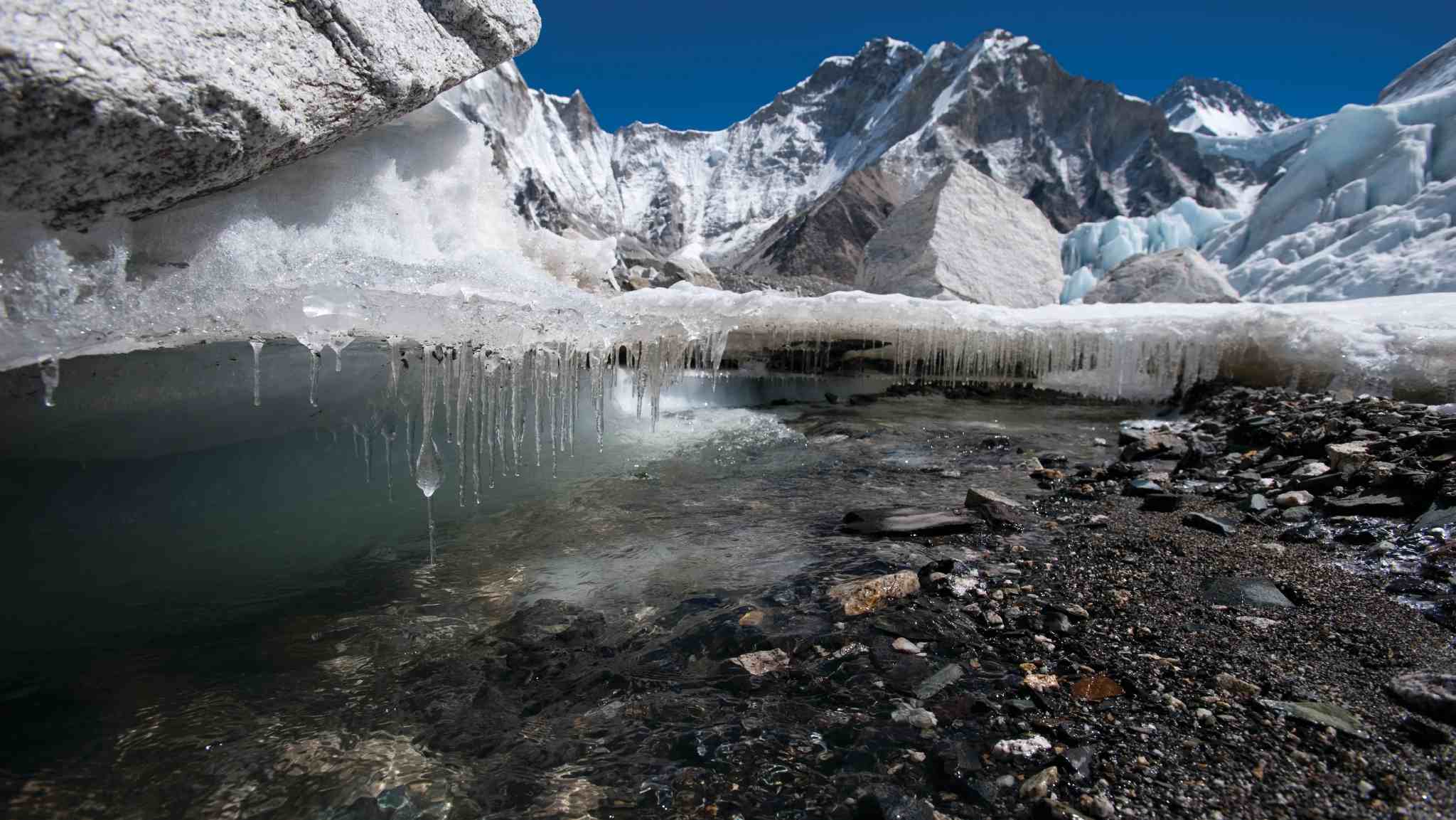
Environment
14:35, 05-Feb-2019
Climate change to melt two-thirds of Himalayan glaciers by 2100
Updated
16:00, 05-Feb-2019
Alok Gupta

Nearly one-third of the Himalaya's glaciers will melt with a temperature rise of 1.5 degrees Celsius, affecting 1.65 billion people in the region, a new study released on Monday said.
The temperature increase is a target set under the Paris Climate Change Agreement.
Consequences would be much more drastic if the emissions rate continues at the current level. The region would heat up by five degrees Celsius, resulting in the loss of two-thirds of the glaciers by 2100, researchers warned.
Such large-scale melting of ice would destroy crops, cause floods and increase the number of natural disasters in the region.
The retreating glaciers would affect large parts of the Hindu Kush Himalaya (HKH) region stretching up to 3,500 km in eight countries: Afghanistan, Bangladesh, Bhutan, China, India, Myanmar, Nepal, and Pakistan.
The Himalayan glaciers feed water to 10 of the world's most important river systems, including the Ganges, Indus, Yellow, Mekong, and Irrawaddy, supporting the livelihoods of and food production for billions of people.
The study, the Hindu Kush Himalaya Assessment, predicts that as a result of the HKH ice melting, more water is expected to surge through the Indus, Ganges and Brahmaputra rivers, causing floods and the displacement of communities.
The excess water from melting glaciers will overflow into lakes and rivers, leading to flooding and crop destruction.
“This is the climate crisis you haven't heard of,” said Philippus Wester of the International Centre for Integrated Mountain Development (ICIMOD), a lead author of the study.
Impacts on people in the region, already one of the world's most fragile and hazard-prone mountain regions, will range from worsened air pollution to an increase in extreme weather events, he added.
Himalayan ice sheets have been threatened by climate change since 1970. In recent years, a high level of air pollution originating from the Indo-Gangetic Plains has led to vast deposits of black carbon and dust on the Himalayan glaciers, exacerbating glacial melting as well as changing monsoon circulation and rainfall distribution over Asia.
“Because many of the disasters and sudden changes will play out across country borders, conflict among the region's countries could easily flare up,” Eklabya Sharma, deputy director general of the ICIMOD, said.
The study, prepared over a period of five years, includes insights from more than 350 researchers and policy experts from 22 countries and 185 organizations.
(Top Image: Melting Himalayan glaciers like this one at Khumbu Nepal will affect more than one billion people in the Hindu Kush region. /Photo courtesy: ICIMOD)

SITEMAP
Copyright © 2018 CGTN. Beijing ICP prepared NO.16065310-3
Copyright © 2018 CGTN. Beijing ICP prepared NO.16065310-3